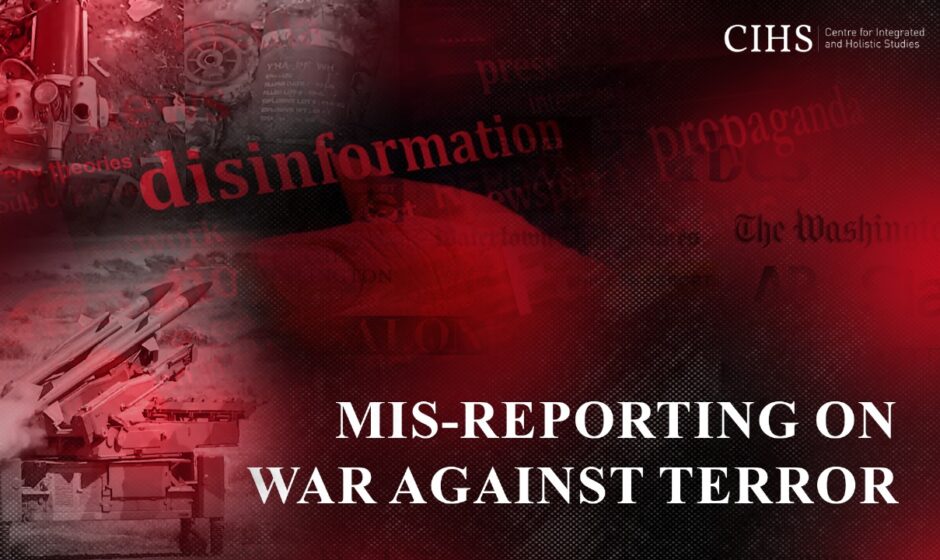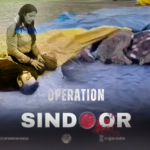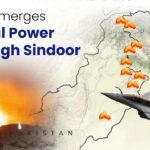India faced serious issues when a few top international media outlets shred objectivity in their reportage on terror, terrorist organizations, their handlers and financiers.
Rohan Giri
In the dense fog of war against terror unleashed by India after dastardly killing of 26 tourists in Pahalgam, several international media outlets rushed not to inform, but to build slanted opinion in sync with their agenda-based narratives.
From manipulated assumptions to selective outrage, recent reportage by outlets like The Independent, Al Jazeera, British Broadcasting Corporation (BBC), The Guardian, The Washington Post and The New York Times raises serious questions not just about journalistic standards but the intent behind this slanted coverage of war on terror. Even global news agency like Reuters fell to prey to such narratives.

Between May 7 – 11, India’s Ministry of External Affairs (MEA) and Ministry of Defence (MoD) jointly released evidence and detailed press briefings were held showing how India’s calibrated military actions were in direct response to a spate of cross-border terror attacks traced to Pakistan-based jihadi networks.
Indian government provided satellite Intelligence, precision strike data and official press briefings were held. But, the international media houses chose to bury facts, ignore or sidestep India’s security concerns, campaign against terror and gave platform to unverifiable Pakistani military propaganda.
One big question was the possible agenda these media houses peddled during the conflict?
London-based The Independent carried articles in series on terror attacks, military retaliation by India and the two full days of conflict. One piece suggested that Pakistan shot down three Indian Rafale fighter jets. Reuters went a step further and put the number of fighter jets lost by India at five. The New York Times even claimed that it had evidence. But then, what’s the basis for these dispatches?
Well, an old hand at international news agencies averred that the story was blurted out by American security establishment sleuths that reportedly kept a watch on India’s precision strikes that led to destruction of nine terrorist sites in Pakistan occupied Jammu Kashmir and deep within Pakistan where over 100 terrorists were neutralised.
Another version was that Chinese Communist Party apparatus swung into action. Its agenda that apparently was pushed big time. As per these media analysts, China was keen to portray that its military aircraft and missiles in Pakistani armour shot down the Rafale fighter jets. Beijing’s possible intent was to establish its superiority in tactical and technological superiority in a complex war theatre.
The word around was that China was simultaneously looking at testing its fighters capabilities and missiles power as against French Dassault built Rafales and Indian missiles.
Well, one wonders on ethical part of media ecosystem that comes under close scrutiny in trying war situation. But then, lobbies with geo-political interests and corporates pushing their defence ware also played out.
Unverified claims made by Pakistani military as part of its psychological offensive was taken as ‘fact based’ news copy without third-party verification or forensic satellite imagery.
Interestingly enough, the big unanswered question was why several international media outlets failed to pass muster by for not juxtaposing India’s official version or basic checks done with South Block that houses defence ministry on Raisina Hill.
A story on similar lines filed by The New York Times team in South Asia with screaming headlines that India lost jets. This is contrary to Indian army version that all aircraft returned safely to their base.
If Pakistan had such decisive victories shooting down as many as five Indian jets and global media networks reported this as the ‘absolute truth’ where’s the evidence? Did Pakistan present wreckage or pilot log information? Was evidence sought either from US security establishment, Chinese peddlers or Pakistani machinery? Is this objective ‘war reporting’ or part of the larger misinformation campaign launched by Islamabad, its backers and cahoots?
Another write up by Independent claimed that India used Israeli-origin Harop drones against Pakistan in a provocative act insinuating recklessness. Again, no proof was offered, no drone telemetry was shown and no assessment was provided of the Harop’s actual precision capabilities. Were these articles meant to inform the reader—or feed into a broader narrative that paints India as a trigger-happy aggressor, irrespective of facts?
Al Jazeera went a step further. It aired emotional testimonies from locals in Muridke who disputed India’s intelligence that a mosque in the town had doubled up as a terror training camp. Civilians deserve to be heard in a war situation.
But, why was it that these newsmen with huge track record failed to piece together Muridke’s well-documented history as headquarters of Lashkar-e-Taiba. This is not classified information—it is part of the 26/11 Mumbai terror ATF reports and independent research. Why suppress this reality? Who benefits from painting that Muridke was a “victim”?
Moving to the next peddler, The Guardian published a humanizing profile of Pakistan Army Chief General Asim Munir, portraying him as a composed and stabilizing force. What got omitted in the process was Munir’s leadership of Pakistani military that intensified support to jihadist proxies under the guise of “strategic depth”—a doctrine responsible for decades of regional instability.
Why romanticize military leadership in a country where elected civilian voices are repeatedly silenced and the army retained unchecked power? Why does The Guardian avoid similar puff pieces for India’s civilian leadership during crisis management?
In another article, The Guardian casually reported India’s accusations that Pakistani drones had attacked Indian civilian and military sites. It framed this as part of a “tit-for-tat” cycle—effectively equating defensive action with terrorist provocation. But how can a country’s retaliation after civilian deaths be presented as escalation? Is there no difference between attacking civilians and targeting terror camps based on intelligence?
Meanwhile, The Washington Post centered its story on the theme of “misinformation”—but blurred the lines between Pakistan’s unverifiable claims and India’s official statements backed by data and press briefings. Does Washington Post really believe a constitutional democracy’s formal briefings are on par with WhatsApp forwards and anonymous leaks pushed by a military-intelligence complex with a known record of deception?
This raises deeper concerns: Why is there a persistent attempt to delegitimize India’s war against terror and security response? Why are Pakistan repeatedly framed as a misunderstood victim despite its terror sheltering? Why is evidence from the Indian state weighed less than denial from Pakistan’s military?
The answer may lie in ideological lenses through which many foreign outlets view South Asia especially India. There is long-standing discomfort with a strong, assertive India that doesn’t conform to self-proclaimed Western liberal values. When India as the world’s largest democracy acts with strategic clarity and military precision, many institutions instinctively reach for reductive labels – “nationalist,” “militant,” “authoritarian.” But when Pakistan, a military-run state with a track record for aiding terror networks, denies involvement, it is taken at face value. This definitely is not journalistic skepticism. This is ideological bias.
Now consider what Indian authorities presented between May 7–10:
- Ministry of Defence released satellite imagery confirming the locations of active training camps in Muzaffarabad, Kotli, Bhimber, Sialkot, Muridke, and Bahawalpur.
- Indian strikes were executed with high-precision munitions, specifically avoiding civilian zones. No deaths were reported beyond confirmed militant targets.
- Radar data confirmed multiple drone incursions from Pakistan into Jammu & Kashmir, Rajasthan and Punjab airspace, including one targeting an army logistics base near Udhampur.
- India’s foreign minister Dr. S. Jaishankar emphasized in his May 9 briefing, “India does not seek escalation. But India will not tolerate impunity for terrorism.”
- Indian Air Force confirmed that no aircraft had been lost while countering Pakistan’s unverified claims with mission debriefs and pilot logs.
Where were these facts in the foreign coverage?
Failure of international media to do objective journalistic writing points to a deeper malaise: the assumption that India must always explain itself more while Pakistan can simply deny and walk away. This is not just lazy journalism – it is dangerous agenda based writing by proxy.
Moreover, skewed or mis-reportage fuels global misperceptions. When observers, policymakers, and multilateral institutions read misleading headlines, they form opinions based not on ground reality, but on editorialised fiction. This steers conversations, security cooperation and counter-terrorism collaboration efforts. In other words, misreporting on India-Pakistan tensions is not a harmless error—it is a geopolitical liability.
This selective skepticism undermines a broader principle: that democracies should be given at least same benefit of doubt that autocracies or radicals are allowed. Indian government releases statements that can be challenged in Parliament, debated by the opposition and fact-checked by an independent judiciary and media. Pakistani military faces no such internal check. Then, why are their claims considered “balanced” against India’s official record?
Global media outlets may have to undergo serious introspection. What is your benchmark for sourcing? Do you have wherewithal to differentiate propaganda and facts? Why is “he said, she said, or unknown sources” reporting still the norm in a region where asymmetry of truth is weaponized by non-state actors? Why are Indian voices—from diplomats to defense analysts—sidelined while space is given to unverifiable anonymous military sources across the border?
Even more worrying is moral framework that some of these outlets deploy. Their narrative architecture implies a false equivalence between state action and terror provocation, between surgical strikes and suicide bombings, drone surveillance and militant infiltration. This is not impartiality, it is amoral neutrality.
As India continues to grow in global stature—diplomatically, economically, and strategically—its engagement with global media must evolve too. There is space for critical journalism, robust debate and investigative rigour. But that space should not be ceded to agenda-driven misreporting masquerading as global objectivity.
The coverage of recent India-Pakistan tensions by media entities has not only failed the test of journalistic integrity but exposed a troubling ideological prejudice. When facts are available but ignored, history is known but whitewashed and accountability is needed but evaded, the media becomes complicit—not in reporting the conflict, but in sustaining it.
Global media may have to come up with plausible explanation for harbouring biases, prejudices, manipulations and fabrications.
(Author is a doctoral fellow at Amity University in Gwalior, content head at Centre for Integrated and Holistic Studies)



